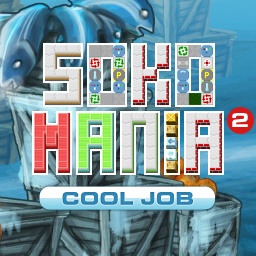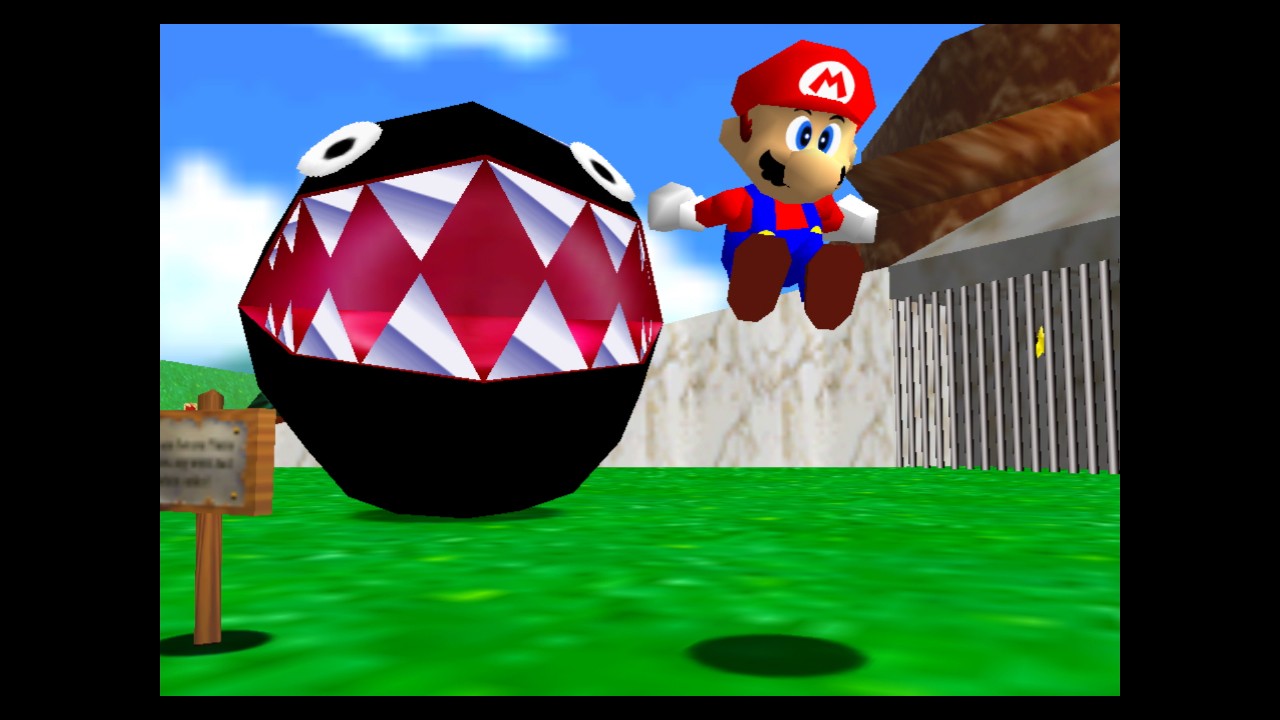
The set of three Mario 3D games was announced as Mario 3D All-Stars, in a special Nintendo Direct for Mario’s 35 years, in early September, with a release date very close to the day it was announced. The collection has divided opinions on the internet, besides creating several controversies such as the fact that the physical and digital versions are limited until March 31, 2021 – in the midst of a global crisis in which we currently live. It is unquestionable that the three games that existed here made history, but is it really worth buying the whole work?
It is undeniable that all 3D Mario games were a milestone, each in its own generation. The main formula of this plumber’s game segment created by Shigeru Miyamoto works almost like an open world, where we can catch stars and go through different stages in the desired order. Not only that but also the diversity and the replay factor are hugely increased, since we can go back in the same scenario several times to catch a different star, finding a modified stage and often presenting new paths, in addition to another viewpoint of the environment.
All of this was revolutionary for the time, and I would say even more so for Mario 64. The first 3D game in Nintendo’s biggest franchise is certainly a legendary title and marked the game’s history, precisely because it gave rise to many titles with “free” movement that emerged after it. The formula for an almost backtracking added to the 3D environments was not common in 1996/97 when it came to Mario games, since we were more used to experiences like Super Mario World (SNES, 1990) and its selection of stages with a starting and ending point.
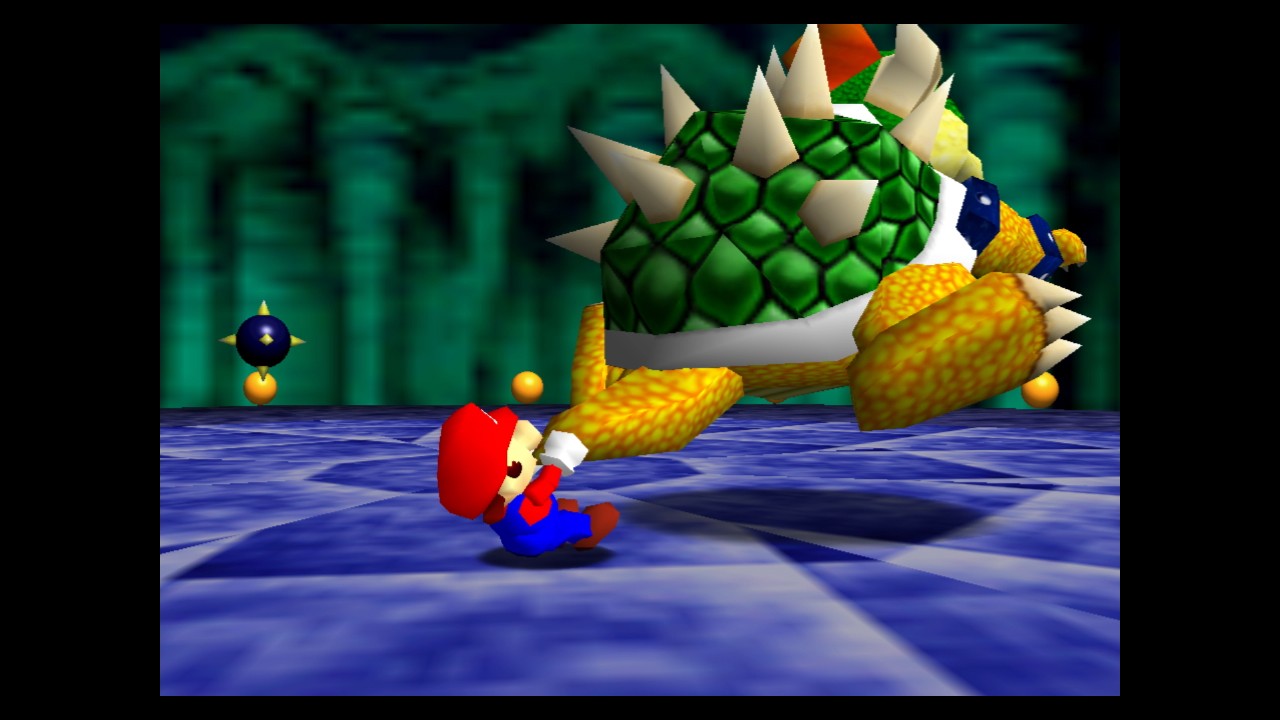
Now, going to the collection, the loading screens of each of the games are more beautiful and could have been used to create a more consistent and current menu. When it comes to extras, there is also not much to discuss here, since the only addition – besides the three games, obviously were music players from Mario 64, Sunshine and Galaxy with the option to darken the screen without turning off the console. Nothing spectacular or that makes the fan feel something special, not even in the physical version that doesn’t even come along with any differentiated printed material.
After discovering that the three games actually run on the Switch through emulation, fears and expectations increase for two different reasons. First, we are excited to know that it is possible for Nintendo to bring more games from its old consoles to the Switch in a quicker way, since the first step has been taken; however, that these three games work through emulation brings with it native problems from the original versions and imperfect adaptations.
As I said, Mario 64 is important because it is the first 3D game of Mario. I didn’t particularly have a great appreciation at the time I played, since I was about 5 or 6 years old. Honestly, Mario 64 is intuitive in much of the gameplay, but reading at times is crucial for the player to have a better idea of what needs to be done in a phase to find a specific star. Perhaps this was one of the reasons why I did not go so far in the game when I was a child and often had to appeal to video game magazines and walkthroughs.
What I didn’t like about Mario 64 in this collection was the following: Mario is still in low poly (looking like a LEGO toy) when the camera moves away, and this in high resolution became much more apparent; enemies and objects disappear on the horizon as it was in the original version because of the low draw distance capability – perhaps the emulation does not allow that kind of adjustments and, if so, they should have made a port to update technical issues; completely irritating and inaccurate camera, without a modernized option that allows 360º movement (at least the control has been mapped to the right analog); the HUD received an upscale treatment (with an awkward aspect, I would say) and some textures have been remade, but most are still in low resolution and the result is an uncohesive mix; the game continues in 4: 3 with no wide screen option.
Almost nothing really relevant has been changed in the game in general, and the controls allow us to clearly see how much the franchise has evolved over the years – fortunately. Mario 64 nowadays gives us the feeling of imprecision when moving the character, although not being an impossible task, but this is mainly because the char turns around an axis when changing to another direction, which often results in pretty boring accidental falls from platforms.
The biggest notable improvement in this one was the increase in resolution, some edges smoothing and the addition of HD Rumble. For me, the biggest annoyance was not having support for the wide screen, and the second game in the collection (Sunshine) received this feature. Okay, some people might probably prefer to play in the format as similar to the original as possible. However, I like it when Nintendo gives me options, which rarely happens.
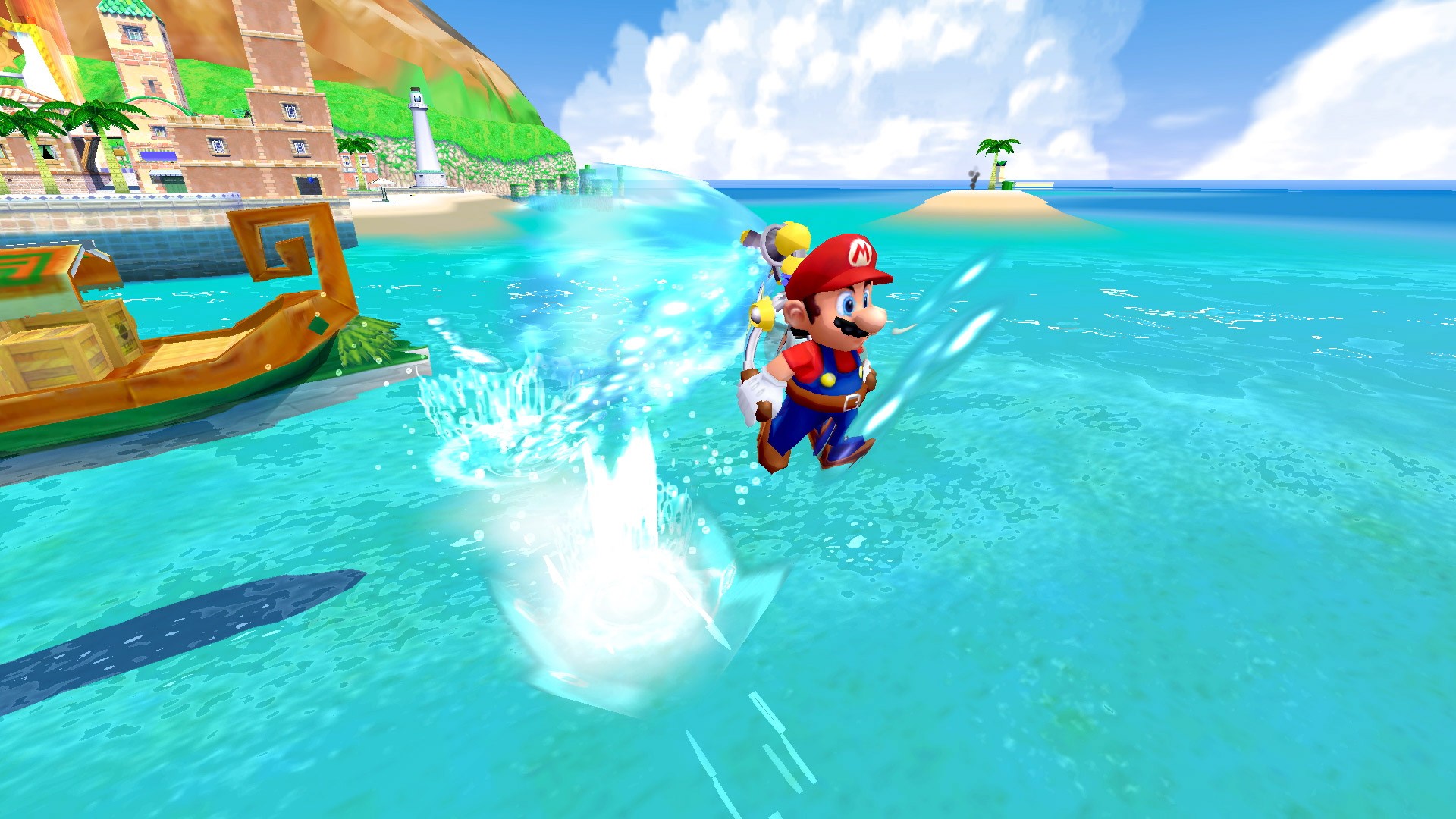
Mario Sunshine was originally released in 2002 for the Nintendo GameCube, with Mario 3D All-Stars being its first official appearance since then. It’s a game many people don’t like, but I assure you that many of them have never even had contact with it at all, even because the game got stuck in the GameCube and was not relaunched, nor through the Wii U Virtual Console. The game is set on the tropical Delfino Island is really the most different from all the 3D Mario franchise, where Mario and Peach together with Toadsworth (“grandpa” Toad) travel on vacation to the paradise island. Your goal here becomes to clean up the dirt caused by a mysterious and gooey liquid that an imitation of the protagonist (Shadow Mario) caused on there. Otherwise, Mario will be thrown into prison on charges of vandalizing the island.
The gameplay shows certain evolutions after its predecessor, Mario 64, mainly in the camera that is now 360 and works with free rotation. The biggest changes here compared to the original are due to the increased resolution, wide screen (whew!) And the adaptation to the Switch controls. Even so, the cutscenes remain at the original GameCube resolution and have received a slight adaptation to simulate the wide screen. Sunshine is the most well polished emulation of the three games, giving the feeling of being a truly native software of the console, causing no kind of weirdness. Despite not having support for the GameCube controller and pressure recognition, I didn’t miss it because it was a game with which I had little contact at the time it was released. So everything seems very natural to me.
With the protagonist, we have a talking device powered by water, called F.L.U.D.D – created by Professor Elvin Gadd, from Luigi’s Mansion (2001) -, which has much more features than it seems to have initially. With it, it’s possible to squirt water jets in a specific direction and attack enemies made of dirt, to use it as an aquatic jetpack to glide for a few seconds, pick up extra pieces scattered around scenarios that will give Mario “new skills” (like a dash or a super jump), etc. It really is the most challenging 3D Mario game in the collection, especially at times when F.L.U.D.D is completely removed from the character. Thus, the player needs to go through quite demanding platform challenges that challenge his precision and patience, just using the basic Mario’s ability: jump. In general, Mario Sunshine again applies a concept of an almost open world, where we can explore Delfino locations to unlock new stages by cleaning up large puddles of dirt. Once again, each stage has a group of stars to be collected, each presenting a different and modified version of that scenario each time we come back to it. With that, the replay factor is again a highlight in this aquatic Mario’s title.
So, now coming to my most beloved game of the collection: Mario Galaxy. For a long time, Galaxy was one of my favourite titles of all time. When I really got to know the Nintendo Wii, the original Galaxy’s platform, the console had already been launched about 7 years before that time. It’s amazing how beautiful the game was in its time, in 2007, even with a ridiculously lower resolution of the Nintendo console that offered a maximum of 480p – if you used a video component cable -, while the competitors already supported 1080p. Whoever played the original version of Mario Galaxy probably remembers how blurred the game was on larger TVs, and even then the art direction was a masterpiece and proved that resolution wasn’t exactly a synonym for quality.
The orchestrated music is fantastic, the great colour combinations, the space ambience and the design of the stages yet are phenomenal. The 1080p resolution (in dock) of this modified version for Switch only elevates all of this to its maximum potential. Honestly, I would never expect to be able to experience one of my favourite games of life in a portable way, and I say with certainty that I’m speechless with such beauty in my hand. I’d say that it’s even possible to consider Mario Galaxy a game made for Switch, so good that it still can hold today.
In Mario Galaxy, Mario receives an invitation from Peach to the castle during the night of the Star Festival. Thus, the protagonist goes to the place, but suddenly Bowser attacks everyone with flying ships, transforming the population into frozen crystals. Then, the villain forces Peach to join his plan to create a new galaxy, and sets off with the princess’s castle towards the centre of the universe. In an attempt to save Peach, a Magikoopa causes Mario to be launched on an unknown planet. So the adventure begins on planets, planetoids and various other space elements. Mario Galaxy marks Princess Rosalina’s first appearance in the franchise, who asks the protagonist for help in restoring her observatory after the attack by Bowser, who stole the Power Stars, including the Grand Stars, and left the place without power. Once the necessary stars have been recovered, the observatory will take Mario to the centre of the universe to fight Bowser. In general, Mario Galaxy has about 121 stars, allowing Luigi to be unlocked as a playable character.
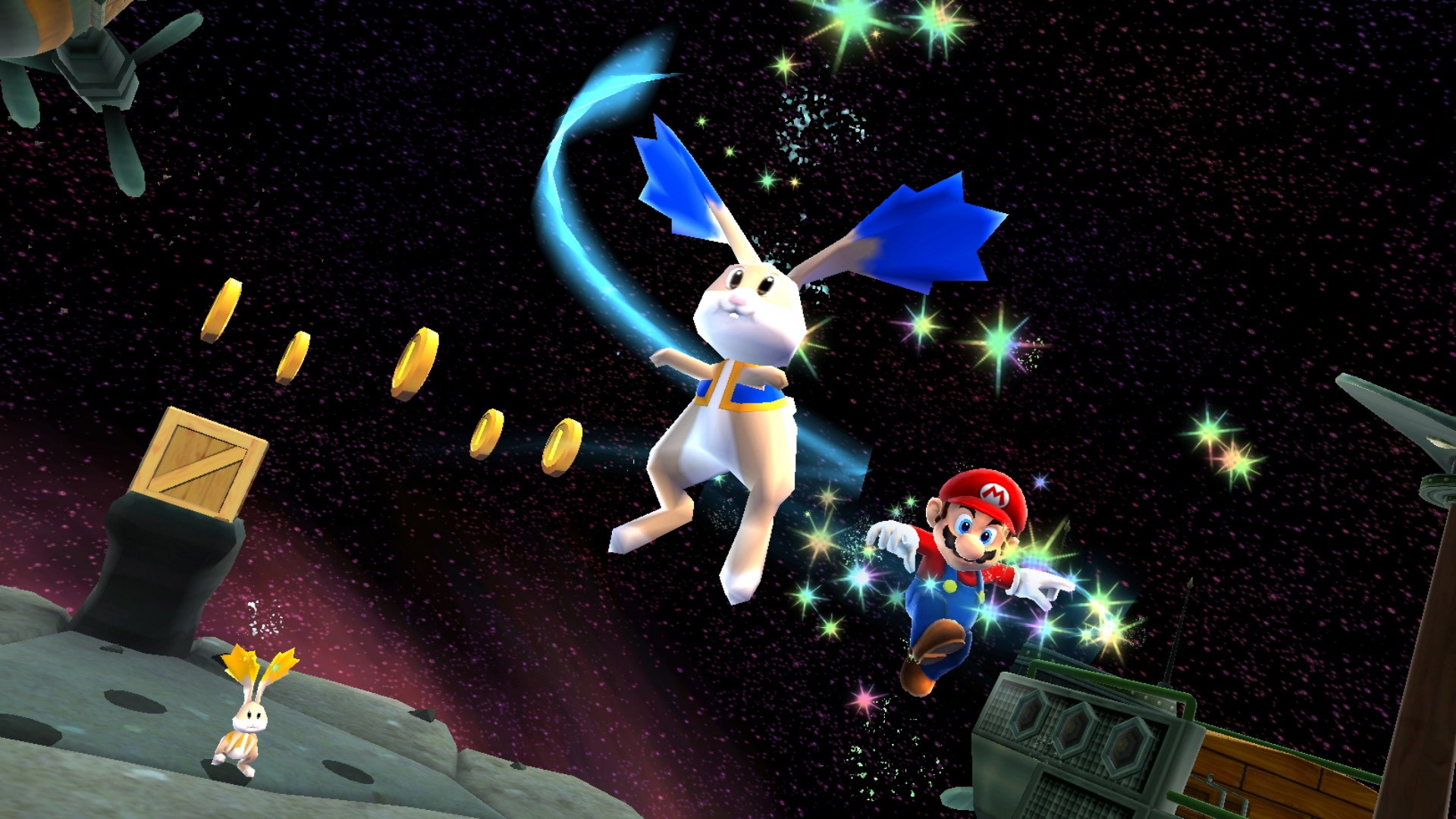
Mario Galaxy’s unique gameplay is certainly one of its highlights, and not only as a game in isolation, but in the 3D franchise in general. Here, Mario can use the power of his companion Luma to perform various spinning stunts, such as his attack. In addition to serving as a way to face enemies during the levels, Mario can use Luma’s ability to spin inside orange stars as a way to travel between planets. The beloved Fire Flower also exists here, but only as a temporary power-up. In general, Mario Galaxy innovates by using various elements of the scenario in an interactive and intuitive way, offering incredibly fun puzzles, quite varied locations and challenges never seen before in the series. However, the pain and delight of some of this game is probably the way it creates gravity. All the planets draw Mario to their centre, which will often turn him upside down, changing perspective and how the controls work. Sometimes this intensifies, and can bother players more sensitive to this type of gimmick. Particularly it’s something that I got used to since the first time I played. However, I must confess that it is not something 100% natural to do for everyone, and sometimes the player will find himself tilting his head involuntarily when trying to follow the protagonist’s perspective.
Again, all stages have a huge replay value, while they can give a feeling of repetition in more demanding players. The scenarios have several stars to be collected, each one being able to choose at the beginning of each planet. Each new level also requires a certain amount of stars collected to be unlocked, but the player is not required to follow a linear playthrough or beat 100% of all stages. Each star still brings a different approach to the same planet, occasionally presenting new paths and points of view.
The controls, although well adapted, are not perfect and give a feeling of unnatural action in the portable play – I’m sorry for those who have only one Switch Lite -, and for me it ended up being a double-edged sword. On the Wii, I didn’t particularly like the mandatory to use motion controls without having a second option. It was necessary to shake the Nunchuck or the Wii Remote for each attack. In the Switch version, my pain was finally solved by finally mapping some movement commands to the Y button, including the attack. However, Mario Galaxy shows its roots by producing an experience closer to the original by playing only in Tabletop or Docked mode.
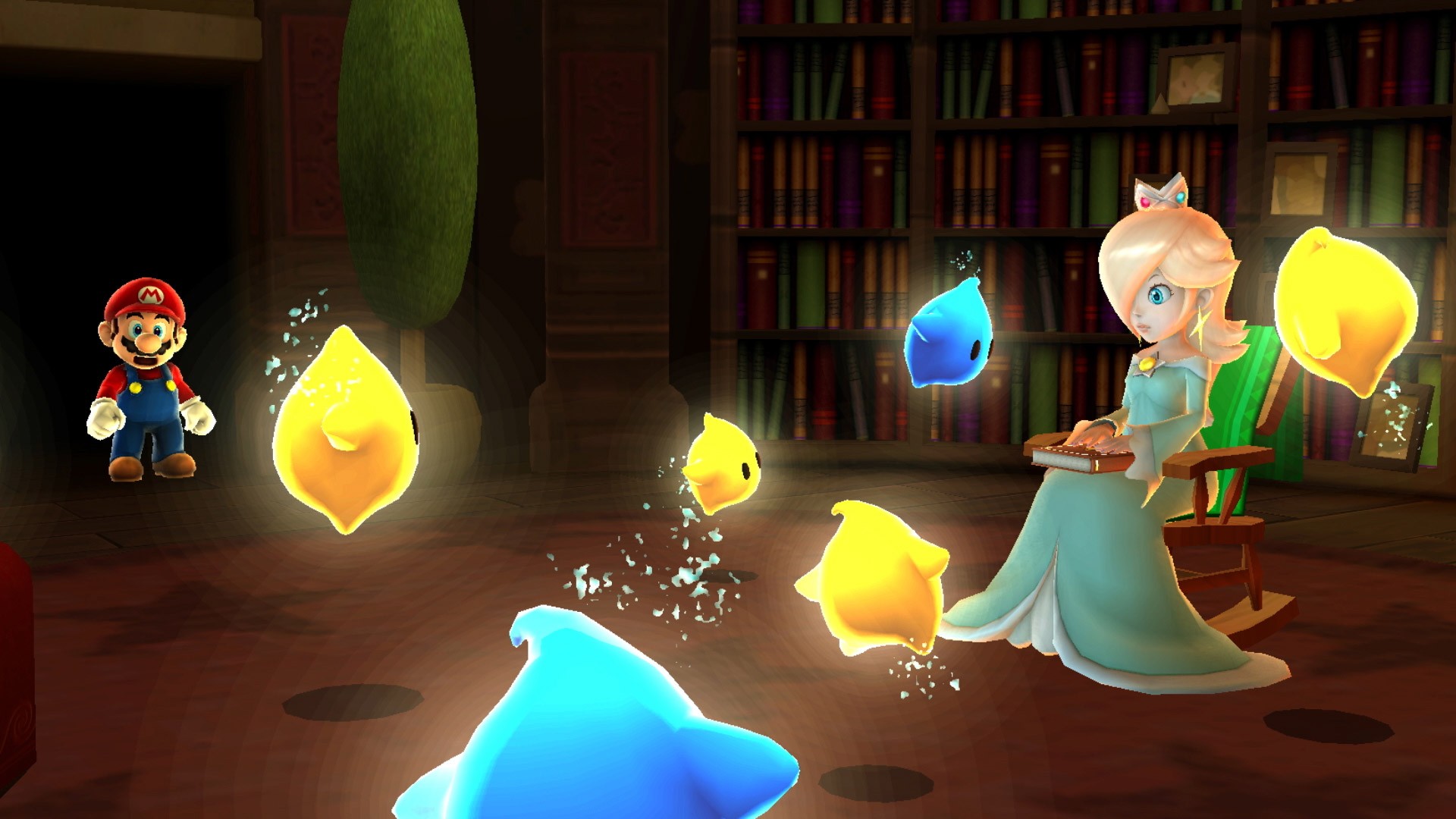
In portable mode, many actions performed by Joy-cons movement have been replaced by touches on the screen. For example, to collect Star Bits it is necessary to run your finger over them, while in blue magnetic stars it is necessary to touch the screen to make the interaction and make Mario be “pulled” to them – yes, you will stick with your thumb in front of the screen and will lose much of your vision. I understand the decision, but the question remains as to why we do not have the cursor pointing command enabled in portable mode as well. Something already seen even in titles of Nintendo itself, as in Splatoon 2 where it is fully possible to aim moving the console even with the Joy-con attached to the console. Is it weird to use it by touching the screen? Perhaps, since it varies from person to person. But one thing I always advocate is: do nothing arbitrarily to players. And that, in my opinion, is a enormous failure of Nintendo because it often seems to not understand that there are people who play in different ways – which such a decision is ironic when it comes to a console that offers several ways to play. Portable gameplay really owes a lot, especially at times when we need agility. Apart from that, movement gimmicks are still mandatory and present in several minigames such as the one where we balance on a ball; The touch on the screen at crucial moments is completely inaccurate and greatly hinders gameplay, even more than in Mario Odyssey, where some commands are made exclusively with motion sensors (fish’s attack command underwater).
Let’s get to the most honest conclusion possible: is Mario 3D All-Stars worth it? The quality of each of the three games is unquestionable. For me, Mario Galaxy is by far the best game of the three available. Mario Sunshine was a great experience, as I had little access when the game launched and more opportunities were missed later. Mario 64 didn’t captivate me at the time, but it seems that now, with a better understanding of the English language, everything makes more sense and I managed to have more fun. However, truth be told. The affection applied in this set of games does not seem to have been so great and does not have the standards of polishing and care that I usually see at Nintendo’s games. I expected much more from a product that celebrates the 35th anniversary of the largest franchise of a company as important in the world of games as this. Several factors probably brought down the quality in this collection, and perhaps the biggest one is the fact that the three titles run in an emulated way. If a real port for the Switch had been made, I strongly believe that many of the details that are annoying about Mario 3D All-Stars would be corrected or better adapted – mainly the touch screen controls. On the other hand, this could increase production costs, further raising the full price charged for the collection: US $60 (on the US Nintendo eShop).
It is also unacceptable and sad to be in 2020 and not be able to play Mario 64 in wide screen officially, since with Sunshine it was done. However, the biggest controversy surrounding Mario’s 35th birthday celebration will keep being his harmful marketing format of limited sales – both in digital and physical versions – to create purposeful shortages, a practice that has already been seen for years in Nintendo. Other than that, I missed something truly special that lives up to the biggest game franchise. Finally, in my brutal honest opinion, the collection is worthwhile only if you really like these three games and understand that they are the most updated and official way to access these contents. If this is not your case, I suggest you hope that Nintendo will make a generous sale before it leaves the Nintendo eShop on March 31, 2021. And, hey, where’s Mario Galaxy 2?
REVIEW CODE: A complimentary Nintendo Switch code was provided to Bonus Stage for this review. Please send all review code enquiries to press@4gn.co.uk.
Subscribe to our mailing list
Get the latest game reviews, news, features, and more straight to your inbox
Thank you for subscribing to Bonus Stage.
Something went wrong.
Super Mario 3D All-Stars Review
-
Gameplay - 8/10
8/10
-
Graphics - 6/10
6/10
-
Sound - 7/10
7/10
-
Replay Value - 9/10
9/10
User Review
( votes)Overall
Summary
This collection is worthwhile only if you really like these three games contained here. A lack of polishment and Nintendo’s standards is easily noticeable here.

